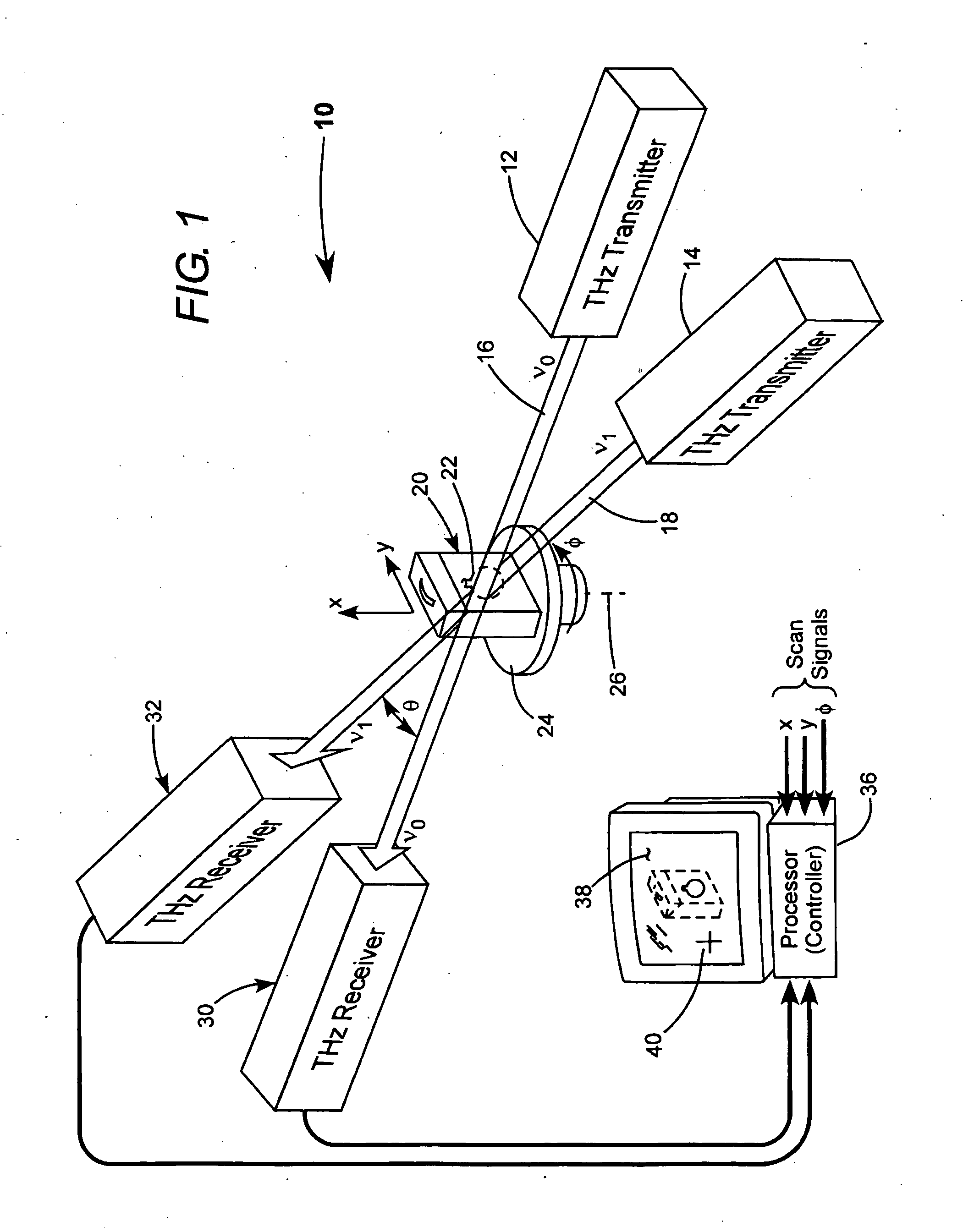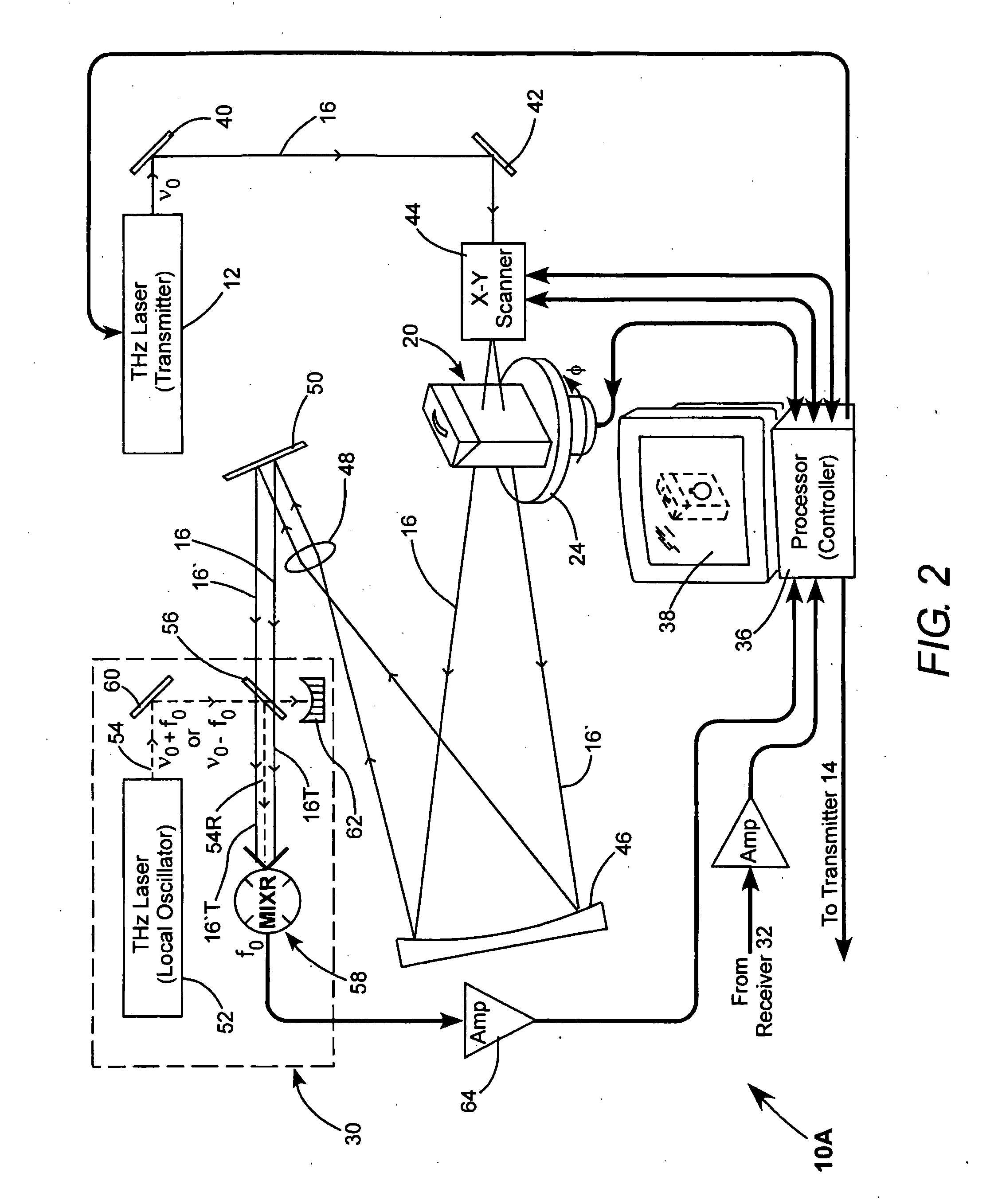Identification of hidden objects by terahertz heterodyne laser imaging
a heterodyne laser and hidden object technology, applied in the field of terahertz (thz) lasers, can solve the problems of unsuitable long wavelengths for high resolution imaging systems, and materials with not much spectral conten
- Summary
- Abstract
- Description
- Claims
- Application Information
AI Technical Summary
Problems solved by technology
Method used
Image
Examples
Embodiment Construction
[0013] The object identification method of the present invention relies on the fact that the transparency (transmission) of many dielectric or organic materials to THz radiation decreases with both increasing density of the material and increasing frequency of the radiation. Accordingly, by determining the thickness of an object, and determining THz transmission of an object at two or more THz frequencies, an absorption coefficient of the object can be calculated at each of the different frequencies. The absorption coefficients so determined can be compared with catalog (look-up table) data of absorption coefficient versus frequency for various materials or various material densities to make an approximation of the density of the object. This can provide an indication of a material included in the object.
[0014] Referring now to the drawings, wherein like components are designated by like reference numerals, FIG. 1 schematically illustrates one preferred embodiment 10 of scanning TH...
PUM
| Property | Measurement | Unit |
|---|---|---|
| angle | aaaaa | aaaaa |
| angle | aaaaa | aaaaa |
| power | aaaaa | aaaaa |
Abstract
Description
Claims
Application Information
 Login to View More
Login to View More - R&D
- Intellectual Property
- Life Sciences
- Materials
- Tech Scout
- Unparalleled Data Quality
- Higher Quality Content
- 60% Fewer Hallucinations
Browse by: Latest US Patents, China's latest patents, Technical Efficacy Thesaurus, Application Domain, Technology Topic, Popular Technical Reports.
© 2025 PatSnap. All rights reserved.Legal|Privacy policy|Modern Slavery Act Transparency Statement|Sitemap|About US| Contact US: help@patsnap.com



